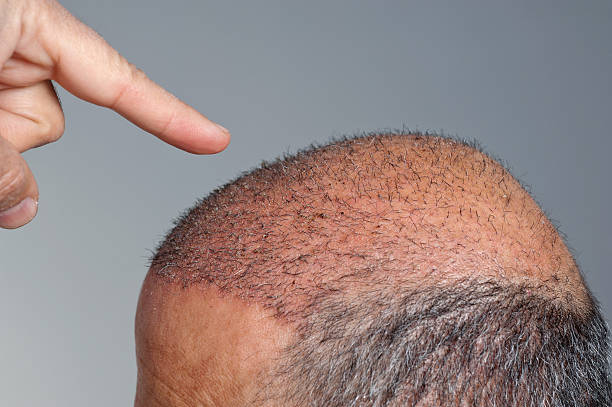Hair Loss Treatments: Options, Benefits, and Results
Hair loss affects millions of people worldwide, causing not only physical changes but also emotional distress and decreased self-confidence. While genetics plays a significant role in hair thinning and baldness, various factors including hormonal changes, medical conditions, stress, and lifestyle choices can contribute to this common concern. Fortunately, modern medicine and technology offer numerous effective solutions for those experiencing hair loss, ranging from topical medications to advanced surgical procedures.

What Are the Most Effective Hair Loss Treatment Options?
The landscape of hair loss treatment has evolved dramatically over recent years, providing patients with multiple scientifically-backed solutions. Minoxidil, commonly known as Rogaine, remains one of the most widely used topical treatments, available in both 2% and 5% formulations. This FDA-approved medication works by increasing blood flow to hair follicles and extending the growth phase of hair cycles.
Finasteride, marketed as Propecia, represents another cornerstone in hair loss treatment. This oral medication specifically targets DHT (dihydrotestosterone), the hormone primarily responsible for male pattern baldness. Clinical studies show that finasteride can slow hair loss in up to 90% of men and promote regrowth in approximately 65% of users.
For those seeking more advanced solutions, hair transplantation procedures offer permanent results. Modern techniques like Follicular Unit Extraction (FUE) and Follicular Unit Transplantation (FUT) have revolutionized surgical hair restoration, providing natural-looking results with minimal scarring.
Which Treatment Delivers the Best Hair Loss Treatment Results?
Determining the best hair loss treatment depends largely on individual factors including the extent of hair loss, underlying causes, age, and personal preferences. For early-stage hair thinning, combination therapy often yields superior results compared to single treatments.
Platelet-Rich Plasma (PRP) therapy has gained significant attention as a natural treatment option. This procedure involves injecting concentrated platelets from the patient’s own blood into the scalp, stimulating hair follicles and promoting growth. Clinical trials demonstrate that PRP can increase hair density and thickness, particularly when combined with other treatments.
Low-Level Laser Therapy (LLLT) devices offer another non-invasive option. FDA-cleared laser caps and helmets use specific wavelengths of light to stimulate cellular activity in hair follicles, potentially slowing hair loss and encouraging regrowth.
What Is the Best Treatment for Hair Thinning?
Hair thinning, often the earliest sign of pattern baldness, responds particularly well to early intervention. Topical treatments like minoxidil foam or solution can be highly effective for diffuse thinning, especially when applied consistently over several months.
Nutritional supplements containing biotin, iron, zinc, and saw palmetto may support hair health, though results vary among individuals. Addressing underlying nutritional deficiencies through proper supplementation can improve hair quality and reduce excessive shedding.
Microneedling, performed professionally or with at-home dermarollers, creates microscopic wounds in the scalp that may enhance the absorption of topical treatments and stimulate natural healing responses that benefit hair follicles.
| Treatment Type | Provider/Brand | Key Features | Estimated Cost Range |
|---|---|---|---|
| Minoxidil 5% | Rogaine, Kirkland | FDA-approved, over-the-counter | $20-40/month |
| Finasteride 1mg | Propecia, Generic | Prescription oral medication | $30-80/month |
| Hair Transplant FUE | Bosley, Hair Club | Permanent surgical solution | $4,000-15,000 |
| PRP Therapy | Local dermatology clinics | Natural, minimally invasive | $500-1,500/session |
| Laser Therapy Device | HairMax, Capillus | At-home FDA-cleared devices | $200-3,000 |
Prices, rates, or cost estimates mentioned in this article are based on the latest available information but may change over time. Independent research is advised before making financial decisions.
Understanding Treatment Timelines and Expectations
Most hair loss treatments require patience and consistency to achieve visible results. Topical minoxidil typically shows initial effects within 3-4 months, with peak results occurring after 12-18 months of regular use. Finasteride may take 6-12 months to demonstrate significant improvement, as hair growth cycles naturally progress slowly.
Hair transplant procedures provide the most dramatic and permanent results, though full outcomes may not be apparent until 12-18 months post-surgery. The transplanted hair initially falls out within 2-3 weeks, which is normal, before new growth begins around the third month.
Combining multiple treatments often accelerates results and provides more comprehensive coverage of different hair loss mechanisms. Many healthcare providers recommend starting with less invasive options before progressing to surgical interventions.
Potential Side Effects and Considerations
While generally safe, hair loss treatments can cause side effects in some individuals. Minoxidil may cause scalp irritation, dryness, or unwanted facial hair growth in women. Finasteride carries potential sexual side effects in a small percentage of men, including decreased libido or erectile dysfunction.
Surgical procedures involve typical surgical risks including infection, scarring, and temporary numbness. Choosing qualified, experienced practitioners significantly reduces these risks and improves outcomes.
The journey to addressing hair loss requires realistic expectations and often long-term commitment. While no treatment guarantees complete hair restoration, the combination of proven therapies can significantly slow progression and improve hair density for most individuals. Consulting with dermatologists or hair restoration specialists helps determine the most appropriate treatment plan based on individual circumstances, ensuring optimal results while minimizing potential risks.
This article is for informational purposes only and should not be considered medical advice. Please consult a qualified healthcare professional for personalized guidance and treatment.




